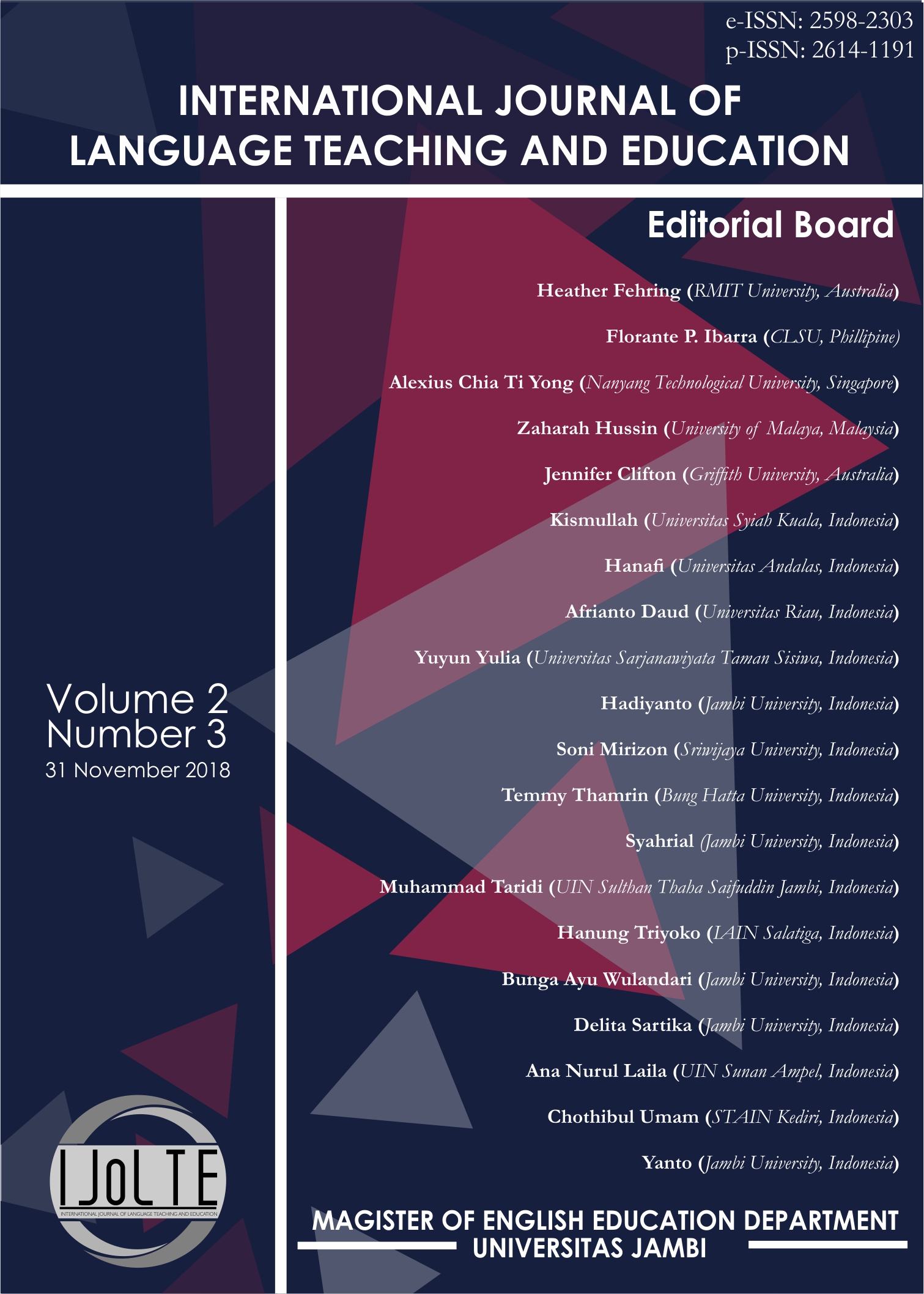Blended Learning in a Paragraph Writing Course: A Case Study
DOI:
https://doi.org/10.22437/ijolte.v2i3.5744Abstract
The emergence of online learning offers the opportunities that are not possessed by the traditional face-to-face learning environment. Combining the strengths of the online learning and face-to-face learning, known as blended learning, is believed to enhance the quality of learning. Different subjects may have different designs of blended learning because there is no specific formula for the best practices of blended learning. This paper reports a study investigating the implementation of blended learning in a paragraph writing course. The purposes were to investigate the blended learning activities carried out in the paragraph writing course and to find out the extent to which it affected students’ writing paragraph performance. The participants of this case study, who were selected purposively, involved one lecturer and six students of a paragraph writing class. The techniques for collecting data included interviews, observations, and document analysis, and the data were analyzed using Miles and Huberman’s interactive model. Ten blended learning activities, including five activities in face-to-face settings and five activities online, were identified in the course. The students’ paragraph writing performance seen from the result of final test was satisfying, indicating that the use of blended learning had a positive effect on students’ writing performance.
Downloads
Downloads
Published
Versions
- 2018-12-01 (1)
- 2018-12-01 (1)
How to Cite
Issue
Section
License
The Authors submitting a manuscript do so on the understanding that if accepted for publication, copyright of the article shall be assigned to International Journal of Language Teaching and Education (IJoLTe) and Magister Program of English Education Department, Universitas Jambi as publisher of the journal. Copyright encompasses rights to reproduce and deliver the article in all form and media, including reprints, photographs, microfilms, and any other similar reproductions, as well as translations.
IJoLTe keep the rights to articles that have been published. And, the authors are permitted to disseminate published article by sharing the link of IJoLTe' website. Authors are allowed to use their works for any purposes deemed necessary without written permission from IJoLTe with an acknowledgement of initial publication in this journal.
IJoLTe and Magister Program of English Education Department, Universitas Jambi, and the Editors make every effort to ensure that no wrong or misleading data, opinions or statements be published in the journal. In any way, the contents of the articles and advertisements published in IJoLTe are the sole and responsibility of their respective authors and advertisers.
If the article was jointly prepared by more than one author, any authors who submitting the manuscript warrants that he/she has been authorized by all co-authors to be agreed on this copyright and license notice (agreement) on their behalf, and agrees to inform his/her co-authors of the terms of this policy. IJoLTe will not be held liable for anything that may arise due to the author(s) internal dispute. IJoLTe will only communicate with the corresponding author.
By submitting the article/manuscript to this journal, the authors agree with this policy and consciously agree that IJoLTe does not provide royalties or other fees to the authors for their published articles. By agreeing this policy, IJoLTe ensures that published articles are publicly accessible and will be free of charge for the readers. No specific document sign-off is required.
Users of this website will be licensed to use materials from this website following the Creative Commons Attribution 4.0 International License. Please use the materials accordingly
You are free to:
- Share — copy and redistribute the material in any medium or format
- Adapt — remix, transform, and build upon the material for any purpose, even commercially.
- The licensor cannot revoke these freedoms as long as you follow the license terms.








1.png)
